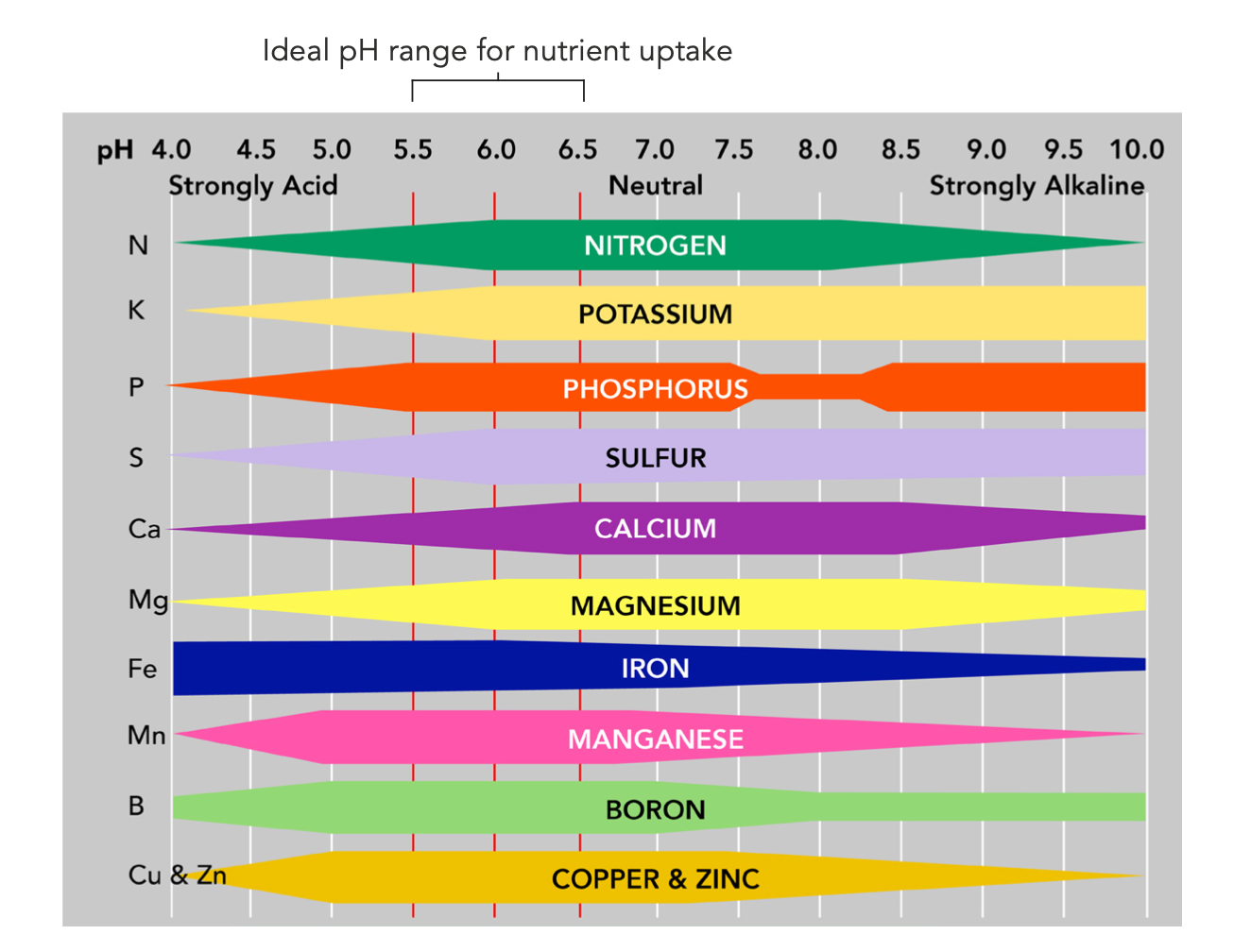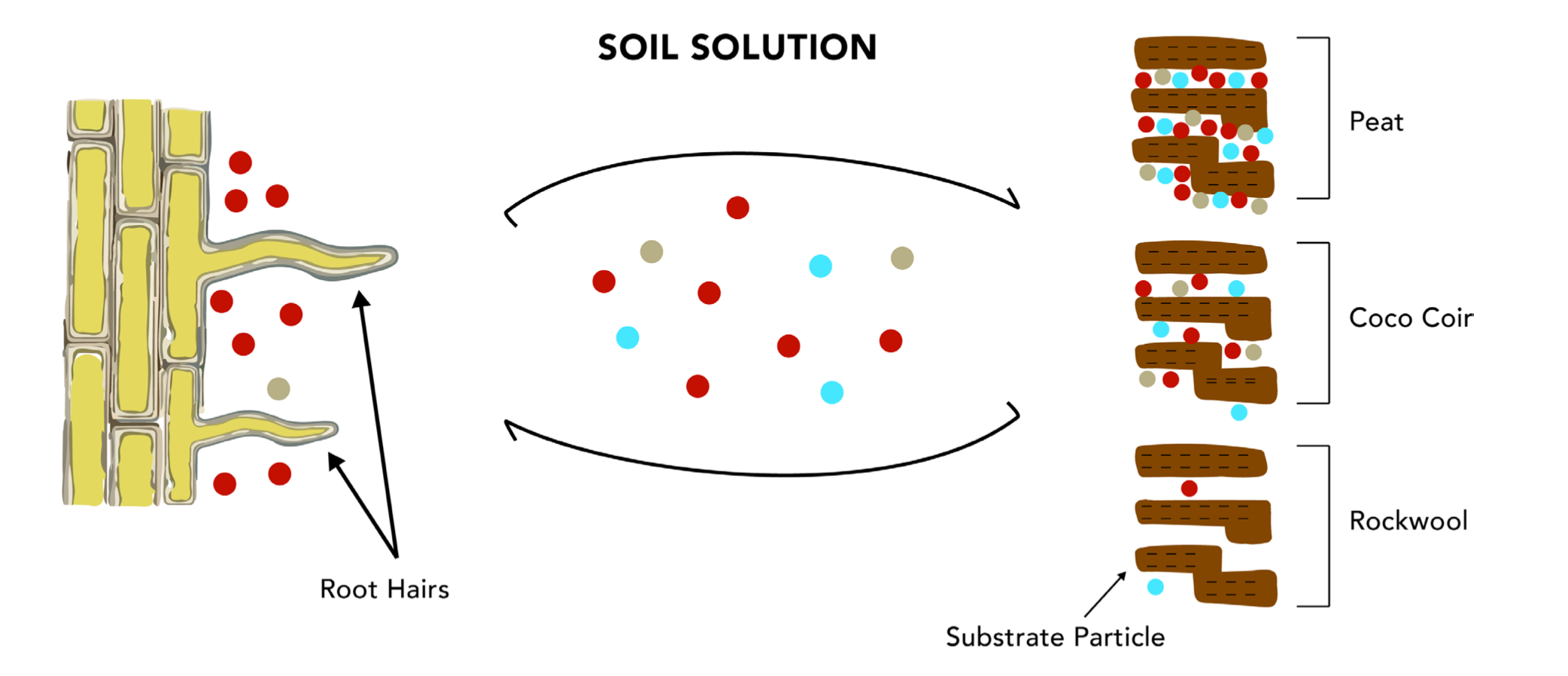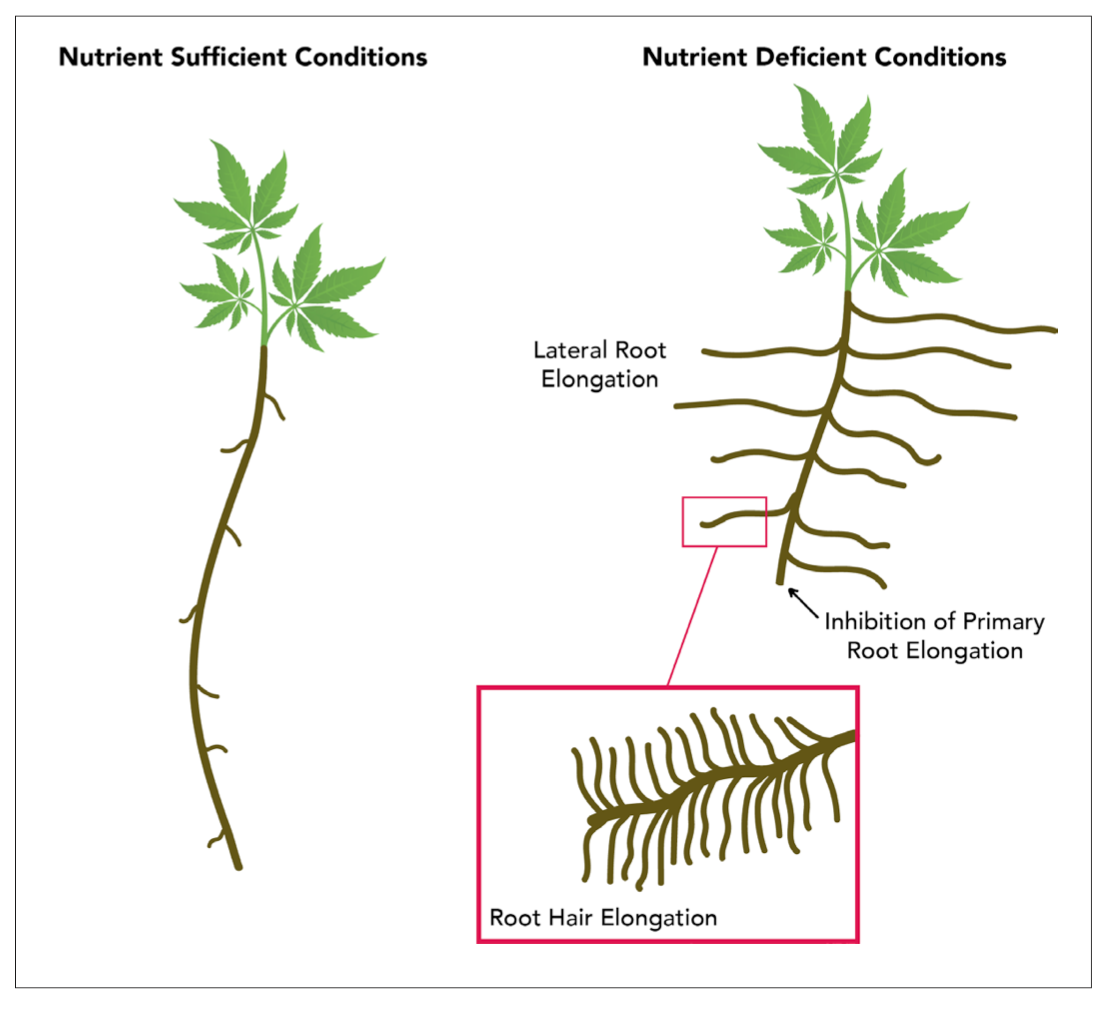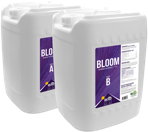Plant-Substrate Interactions
Share this Post
Plants take in essential nutrients for growth and development through root systems anchored in soil or other growing substrates. The interactions between plant roots and the growth media determine whether plants receive sufficient nutrients. The plant nutritional status is dependent on three key components of plant and substrate interactions:
1. Soil environment
2. Plant nutrient
3. Plant physiology
In this paper, we will discuss how plant-substrate interactions govern the nutrient status of the plant. We will take an in-depth look at the substrate environment, how individual nutrients behave in substrates, as well as how plant physiology impacts nutrient uptake.
SUBSTRATE ENVIRONMENT
The substrates in which plants grow are complex systems with interacting physical, chemical, and biological components. A substrate may contain a complete suite of essential plant nutrients, but only a portion of these nutrients are available for plant use. The substrate factors influencing plant availability include pH, cation exchange capacity (CEC), and moisture.
pH
pH can be defined as how acid or basic a growing medium is on a scale of 0-14 with 0 being very acidic and 14 being very basic. Pure water has a neutral pH of 7. pH measures the concentration of hydrogen ions in the medium. The pH of a substrate influences nutrient availability for plants (Figure 1). At acidic pH of < 5.5, nutrients such as P, Fe, Mn, B, Zn, and Cu are more available for plant uptake. At pH > 6.5, Ca and Mg are more available. N and K have consistent availability from pH 4-8. In soilless media, a substrate pH of 5.5-6.5 represents the ideal range for nutrient availability. This pH range is for the media itself, not for the nutrient solution being fed.
CEC
Cation exchange capacity is defined as the ability of a substrate to hold positively charged (cationic) nutrients such as K, Ca, Mg, Fe, Mn, Zn, and Cu. When a growing medium has a high CEC, it will hold on to more of these cationic nutrients. Among common growing substrates used in Cannabis, the following media rank in order from highest CEC to lowest: Peat > Vermiculite > Coco Coir > Clay Pebbles > Rockwool > Perlite. The advantage to high CEC growing media is that nutrients can be held in the substrate for subsequent plant use (Figure 2). In media with low CEC, nutrients not taken in by the plant are lost to runoff. In this way, the CEC of the substrate used plays an important role in nutrient availability by allowing some nutrients to be available at a later time. CEC can also interact with pH in influencing nutrient availability. CEC tends to increase with increasing pH, meaning that the substrate will hold on to more positively charged nutrients.
MOISTURE
Nutrients in a substrate can only move into a plant through water. As the plant takes in water, it will bring nutrients with it. Maintenance of proper moisture is crucial for ensuring nutrient availability. Both dry and water-logged conditions can result in reduced nutrient uptake. When substrates are dry, there is not sufficient water in the medium to transport nutrients into roots. Plants will end the process of pulling water from roots through to leaves (transpiration) when conditions are dry in order to preserve water. This reduces the amount of nutrients taken in by a plant, reducing growth. Similarly, when substrates are too wet and oxygen in the root zone becomes depleted, plants shut down physiological processes and growth, reducing the demand for water and nutrients. Some nutrient toxicities can also be induced when a medium is oversaturated.
PLANT NUTRIENTS
The identity and chemistry of plant nutrients play a role in how uptake and movement through the plant occur. Each plant nutrient differs in its ability to move through growing media and the plant. How the plant takes in the element also varies by nutrient. Finally, the chemical form of the nutrient determines the plant’s preference for its use.
SUBSTRATE MOBILITY
Each plant nutrient differs in its mobility in the growing medium and in the plant (Table 1). In general, elements in plant available form that are positively charged such as K, Ca, Mg, Fe, Mn, Zn, Cu, or Ni, tend to be immobile in soilless media. As CEC and pH of the medium increases, the mobility of these nutrients decreases. Negatively charged nutrients such as N (NO- 3), S, B, Cl, or Mo tend to be more mobile in substrates since the medium has little capacity to bind these elements. P, even though its plant available form is negatively charged, tends to be immobile in media. When a nutrient is mobile, it is more readily available for plant uptake. Conversely, it is also easily leached in the runoff solution. Immobile nutrients tend to be bound in the growing media by the CEC.
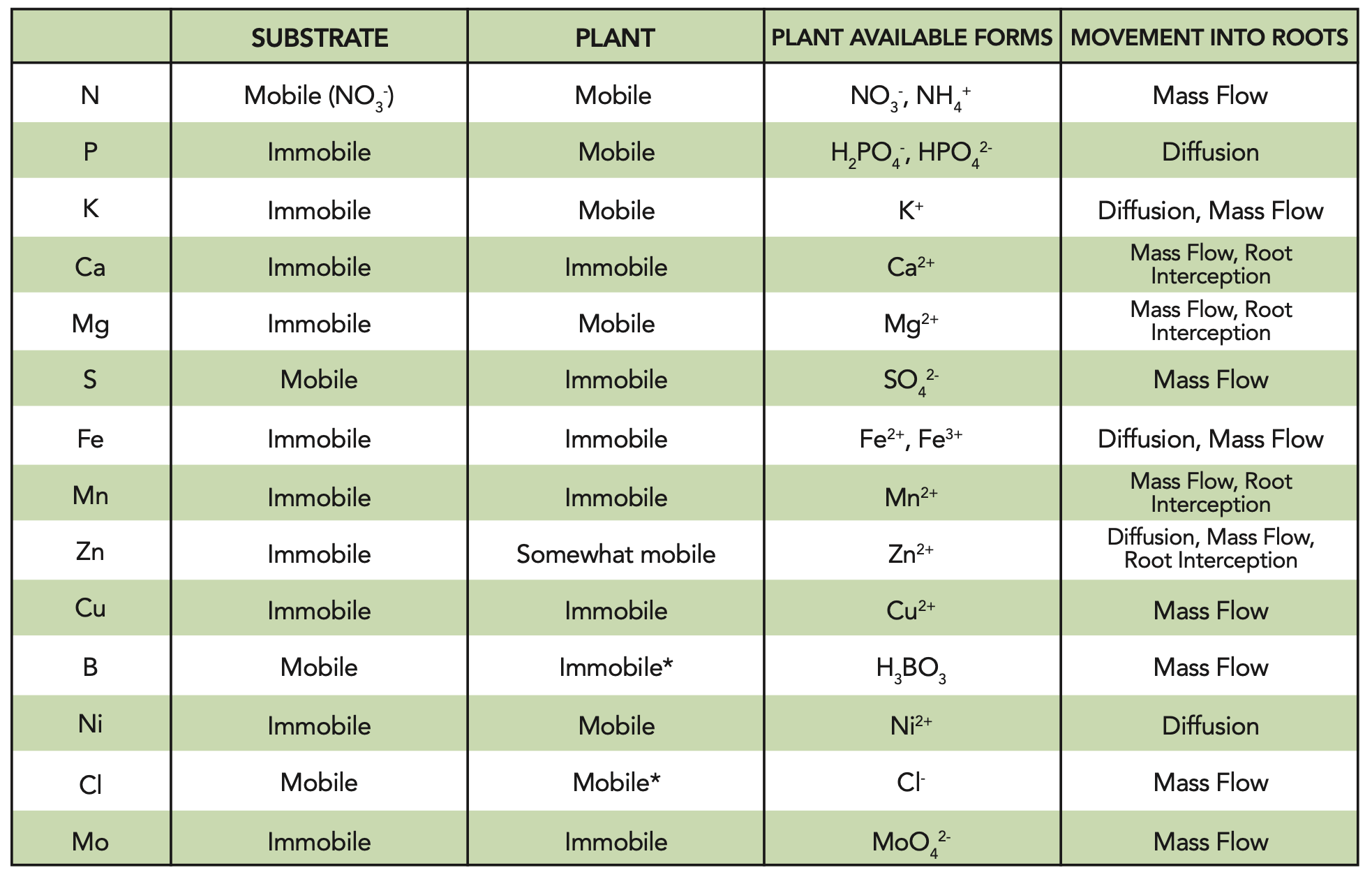
Table 1. Mobility of essential plant nutrients in substrates and plants, plant available forms of nutrients, and the mechanism by which nutrients move into the roots. *Mobility in plant of these nutrients is species-specific.
PLANT AVAILABLE FORMS
Nutrients can exist in many forms in the growing media. However, only certain forms of each nutrient are available for plant uptake and use. Table 1 lists the plant available forms for each essential plant nutrient. Nutrients in other forms are likely unavailable for plant use. Some microbes or changes in substrate conditions could chemically transform elements into plant available forms.
MOVEMENT INTO PLANTS
Not only does each plant nutrient behave differently in terms of its mobility or chemical form, but they also differ in how they move into plant roots. There are three main forms of nutrient uptake:
1. Mass Flow – movement of dissolved nutrients into the plant as the plant absorbs water for transpiration.
2. Diffusion – movement of nutrients to the root surface in response to a concentration gradient. When a nutrient is present in high concentration in the soil solution and a low concentration at the root surface, the nutrient will move toward the root surface where it can be taken in by the plant.
3. Root Interception – roots grow toward substrate particles which contain nutrients. The root can then absorb the nutrient.
The majority of nutrients move with the water in the soil through the process of mass flow. Notably, P, K, Fe, and Ni predominantly move into plants through diffusion. Root interception is the least common mechanism of nutrient uptake, but it is important for movement of Ca and Mg into plants. A final mechanism of nutrient movement into plants is through the process of chelation. Chelator chemicals can be thought of as “claws” that bind to a plant nutrient to protect it for uptake by the plant. Plants naturally exude chelators from their roots in order to capture cationic nutrients, especially micronutrients, like Ca, Mg, Fe, Mn, Zn, or Cu. Amino acids are a common type of chelating agent produced by plants. Natural chelators are exuded by plants in response to nutrient deficiency.
PLANT GROWTH AND PHYSIOLOGY
The soil environment and identity of the nutrient play a role in determining plant uptake of nutrients and thus nutritional status of the plant. Plant growth and physiological processes are the third component in shaping plant-substrate interactions. Root growth and associations with beneficial microbes assist plants in reaching water and nutrients in the substrate. Additionally, the pull of water from roots into the leaves, a process called transpiration, drives much of the plant’s nutrient uptake.
ROOT GROWTH AND BENEFICIAL ASSOCIATIONS
Roots serve two purposes in plants – an anchor for the plant and a mechanism to take in nutrients and water. Roots will grow in order to reach supplies of nutrients in the soil. In fact, overabundant growth of roots, especially lateral ones, is a sign that the plant is not receiving adequate nutrition (Figure 3). Root hairs, which protrude from the roots, can grow through the spaces in a substrate in order to seek out nutrients. These fine structures will also proliferate during nutrient deficient conditions in order to seek out nutrients and water. In order to extend the ability to take in nutrients, plants will often form associations with other organisms. The most common version of this is the symbiotic relationship between plants and mycorrhizal fungi. The mycorrhizal fungi serve to extend the root system of plants, allowing the plant to find untapped sources of nutrients. The plant, in turn, provides support for the fungi. Mycorrhizal fungi tend to be species specific and their viability is affected by the soil environment.
MOVEMENT OF WATER FROM ROOT TO SHOOT
The plant’s need for water in its shoots, leaves, or flowers governs the entire process of nutrient uptake. As stated previously, nutrients move into plants through water. The plant controls how much water is taken in from the roots through transpiration. Water is a crucial component of photosynthesis and also carries nutrients to the plant leaves. When plants want to take in water, they will open the small pores (stomata) present on the underside of the leaf. Water will evaporate through these pores, creating a gradient of lower concentration in the leaf. Water will then move from an area of higher concentration in the plant, such as the roots or shoots, into the leaves. This water will pull nutrients with it. This, in turn, will pull more water from the substrate into the leaves. When plants close their stomata, the flow of water and nutrients into the plant slows.
CONCLUSION
Interactions between plants and the media in which they grow are complex in governing plant nutrition. The soil environment, nutrient identity, and physiological processes of the plant are the drivers of plant nutrition. Providing Cannabis with an ideal environment in both the substrate and as well as aboveground with light, temperature, humidity, and carbon dioxide, is the best way to support proper nutrition. Feeding the right balance of nutrients in the right concentrations is another key factor to ensure optimized yields and quality at harvest.

